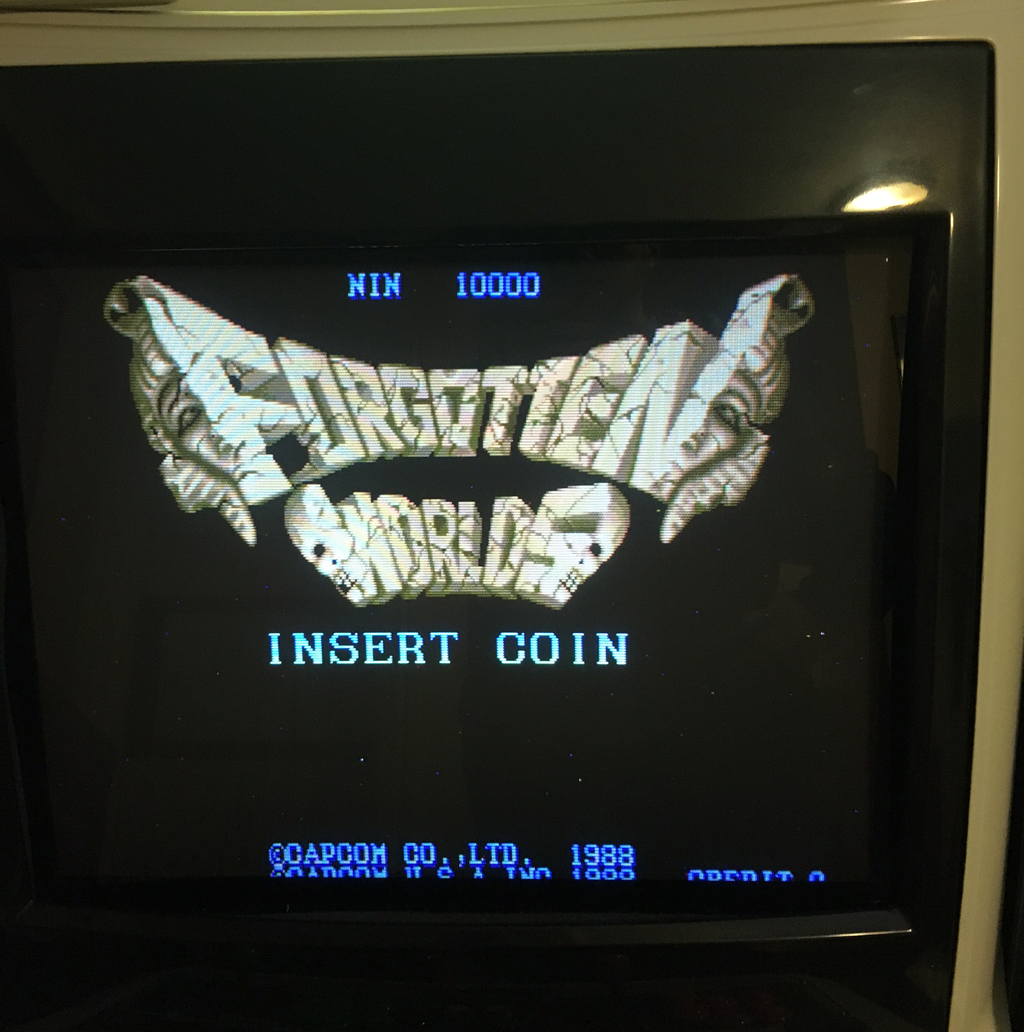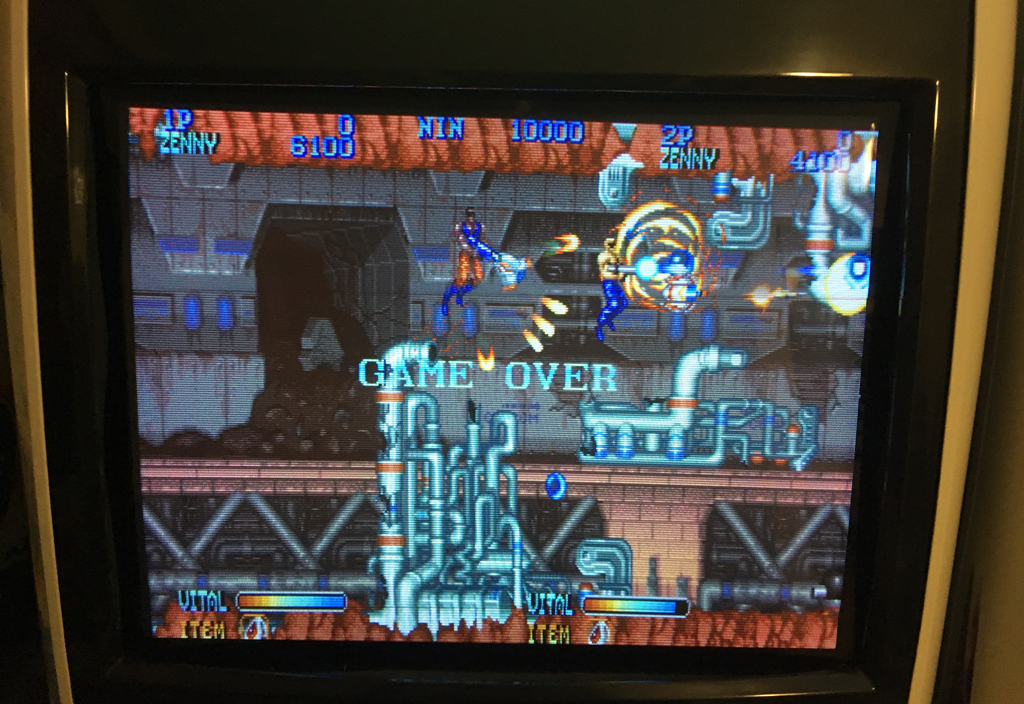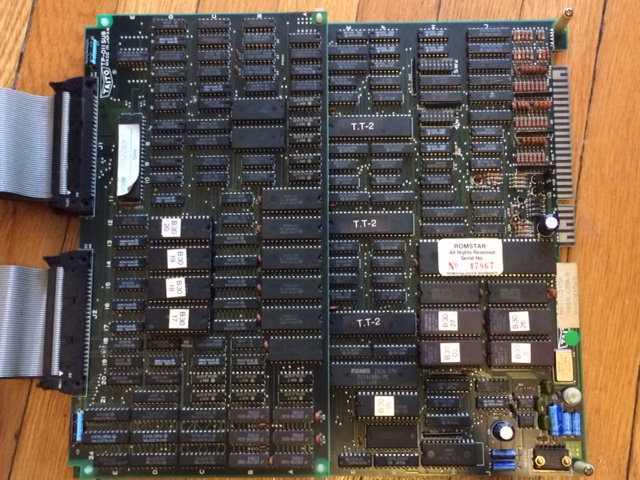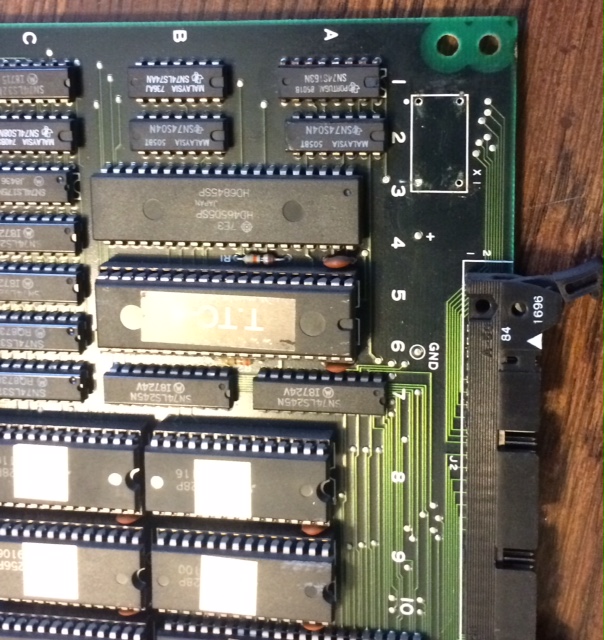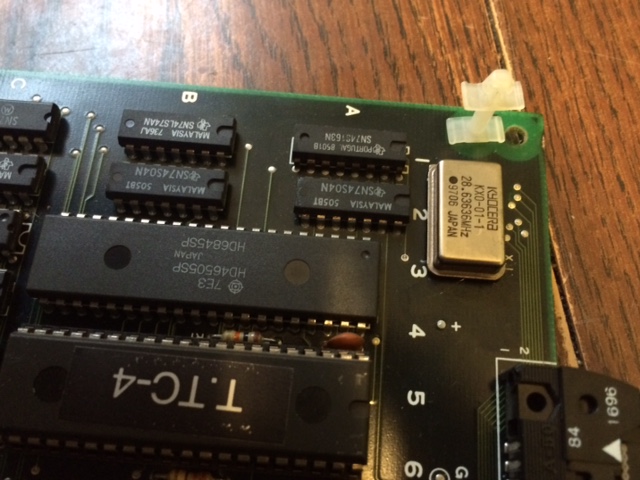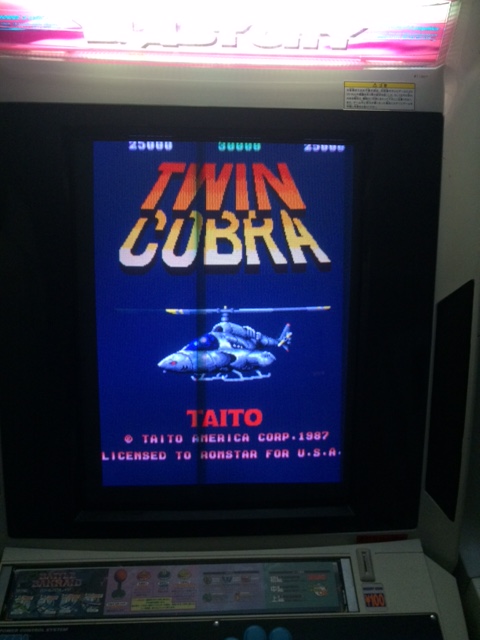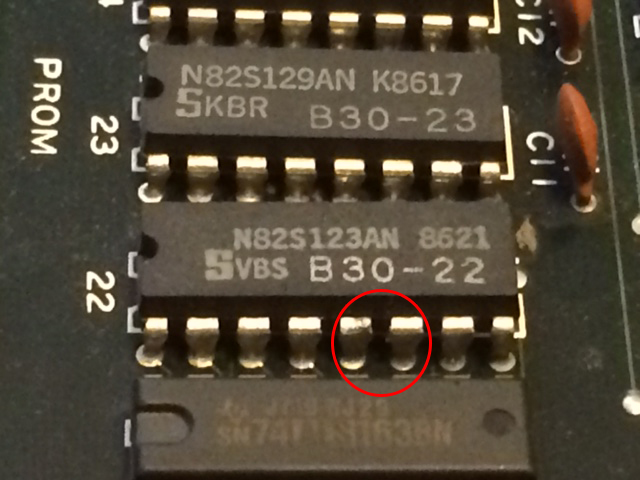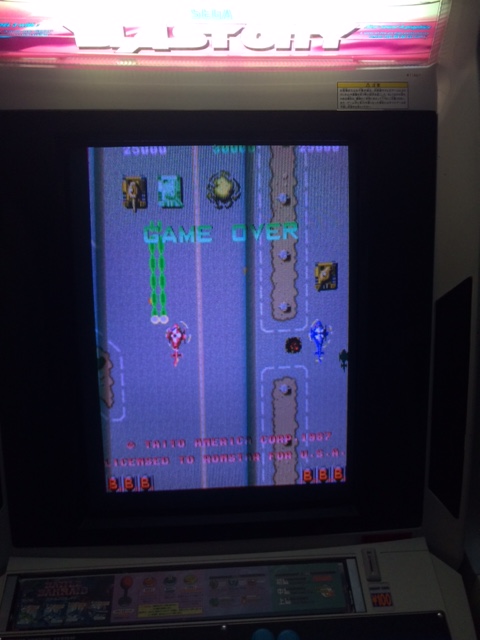I received a very nice condition Forgotten Worlds PCB from a friend of mine, intended for my personal collection. The PCB showed up in spectacular shape, there wasn’t even any dust or grime on it. All original stickers and labels in tact. In fact, this is the first board on the CPS-1 platform where I have seen serial numbers on the A and B board that match:
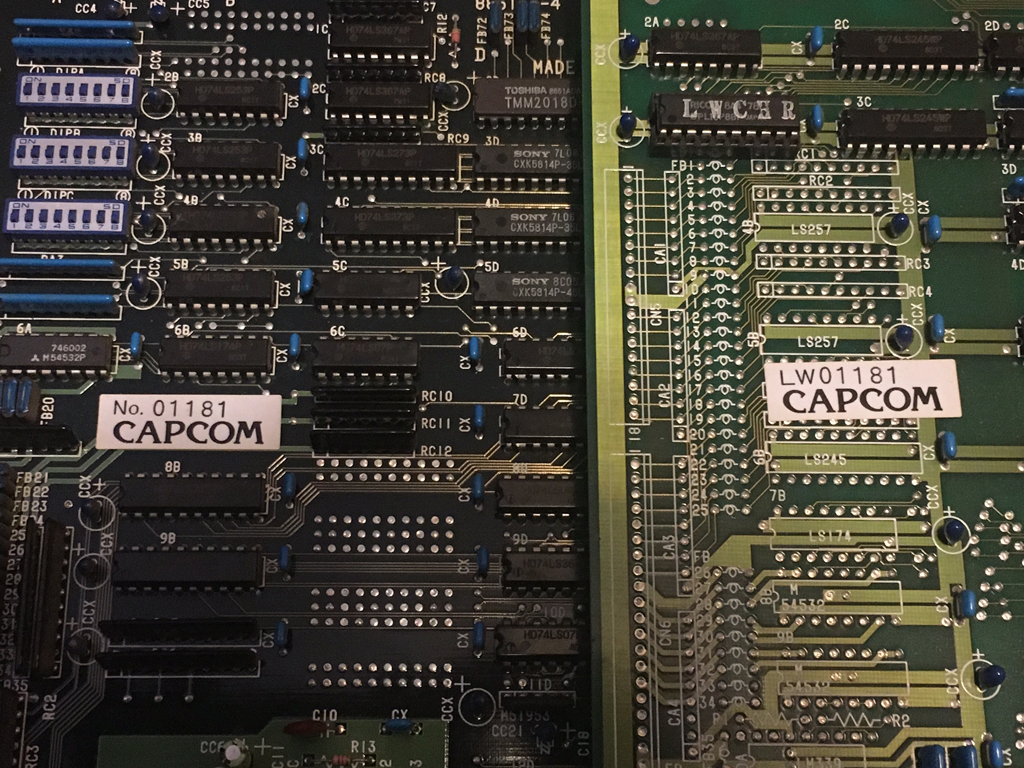
Sadly, when I fired up the game, the colors were all wrong. Previous experience with the CPS1 told me this was likely a bad custom Capcom IC, or a bad ram chip.
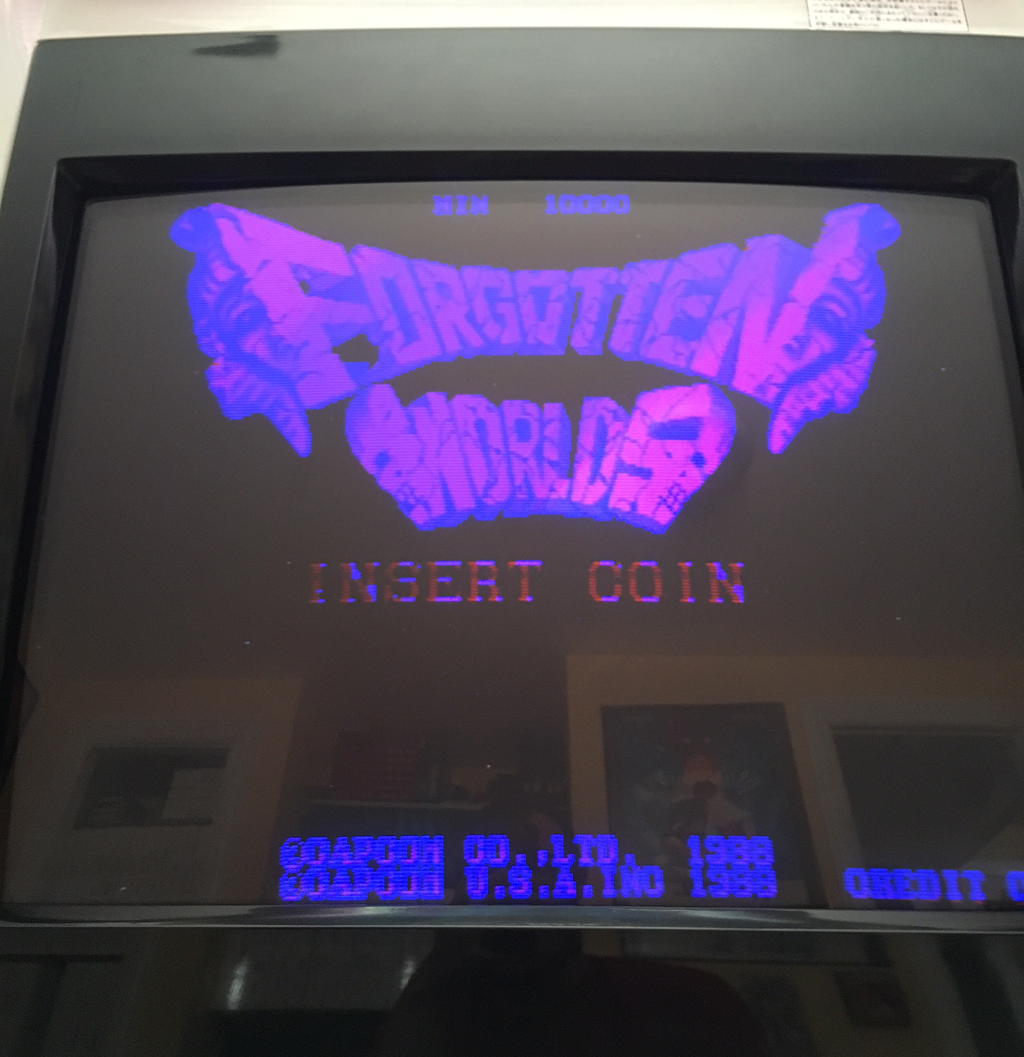
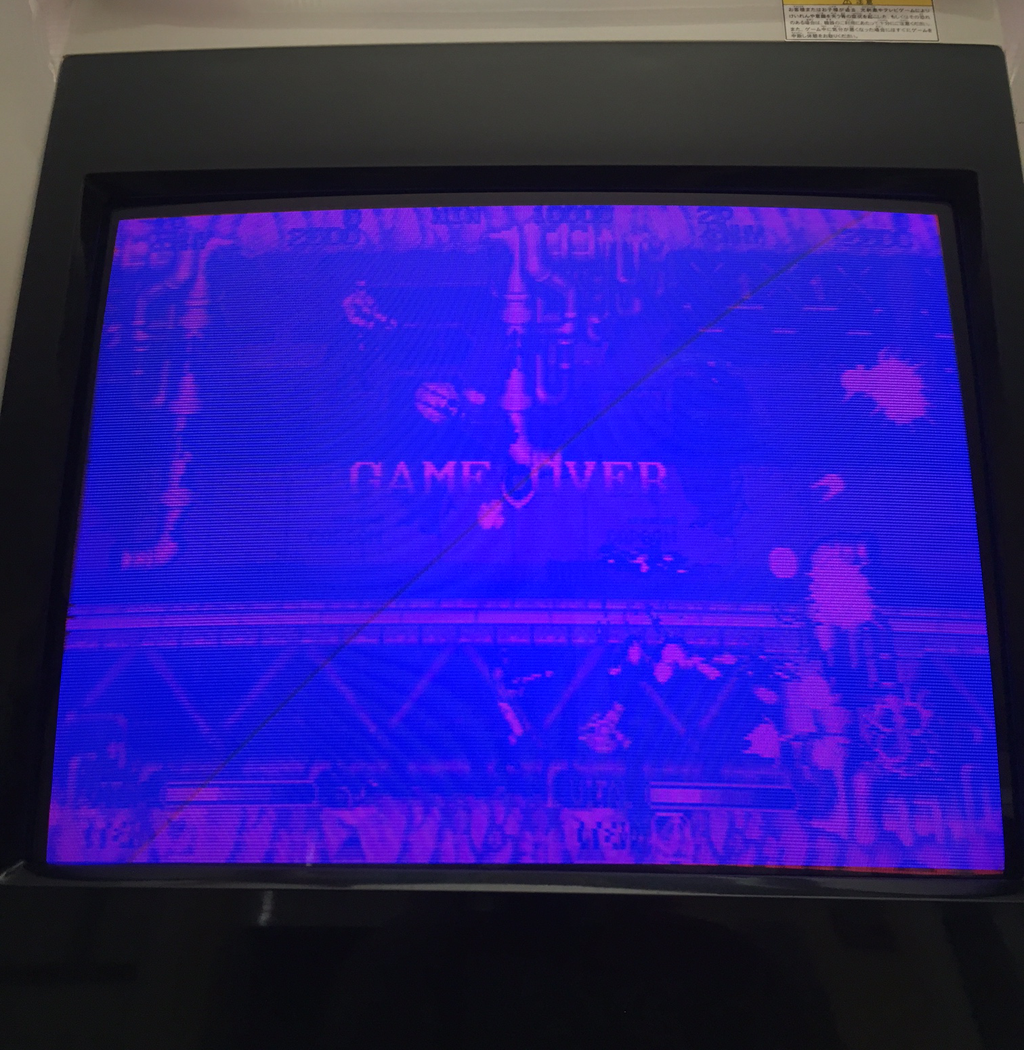
Due to the nature of the CPS1 hardware, and the fact it is very hard to diagnose the motherboard (the A/B double stacked board makes it very hard to probe), I generally just swap the motherboard from a lesser valued game. In this case however, since the serial numbers match, repair was the only option!
With the assistance of the CPS1 Old Hardware Revision A Board schematic posted right here on Jammarcade, and some critical input from Caius, I was able to determine with high certainty where the fault was. In my case, the ram that controls RED was the prime suspect (at location 2D). I did not have any Sony CXK5814 ram chips on hand, but I did have Toshiba TMM2018 which is equivalent. Without hesitation I swapped the IC.
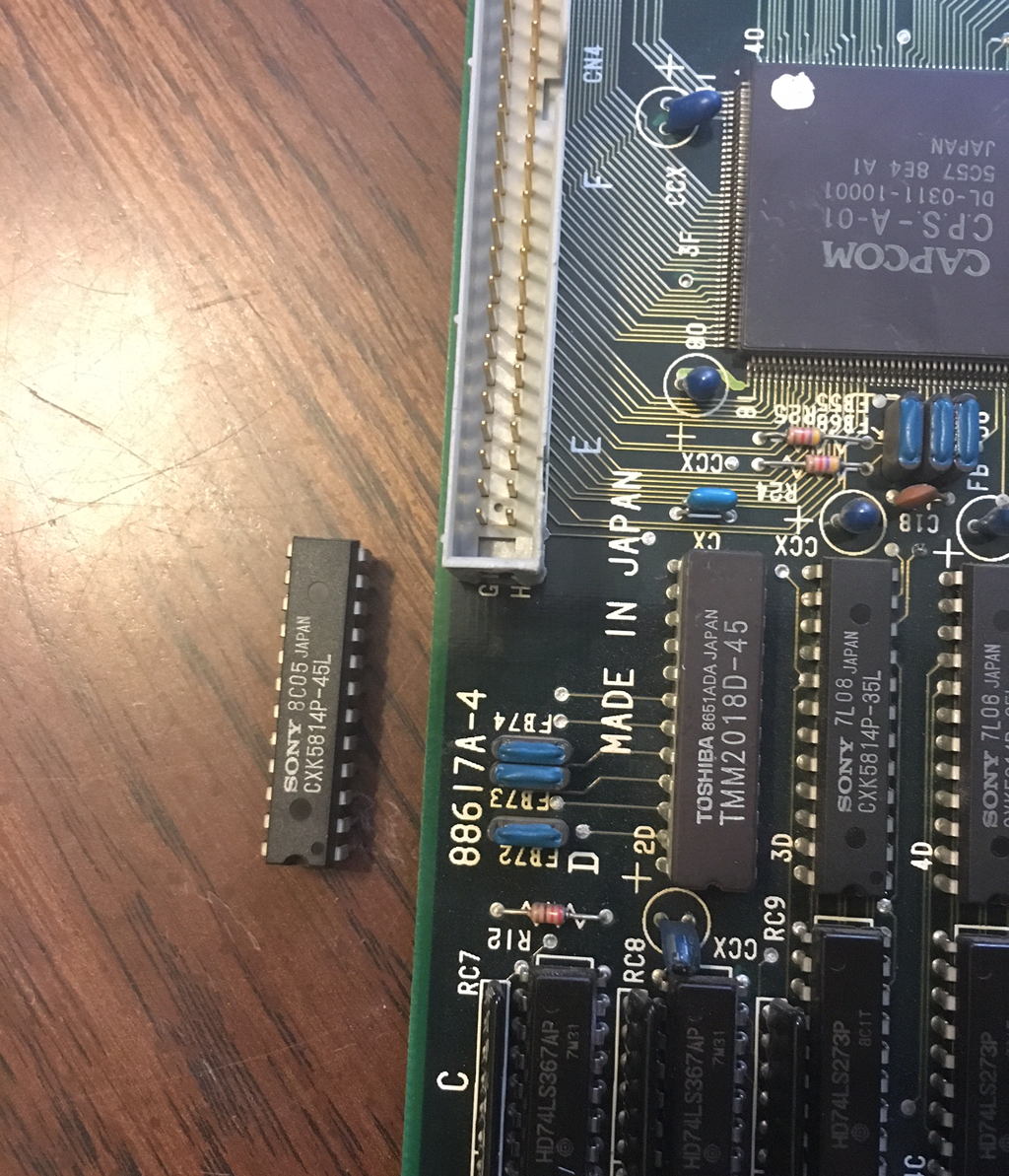
If you were wondering, yes I am enjoying this classic with the proper “Rolling Switch” spinner controls.
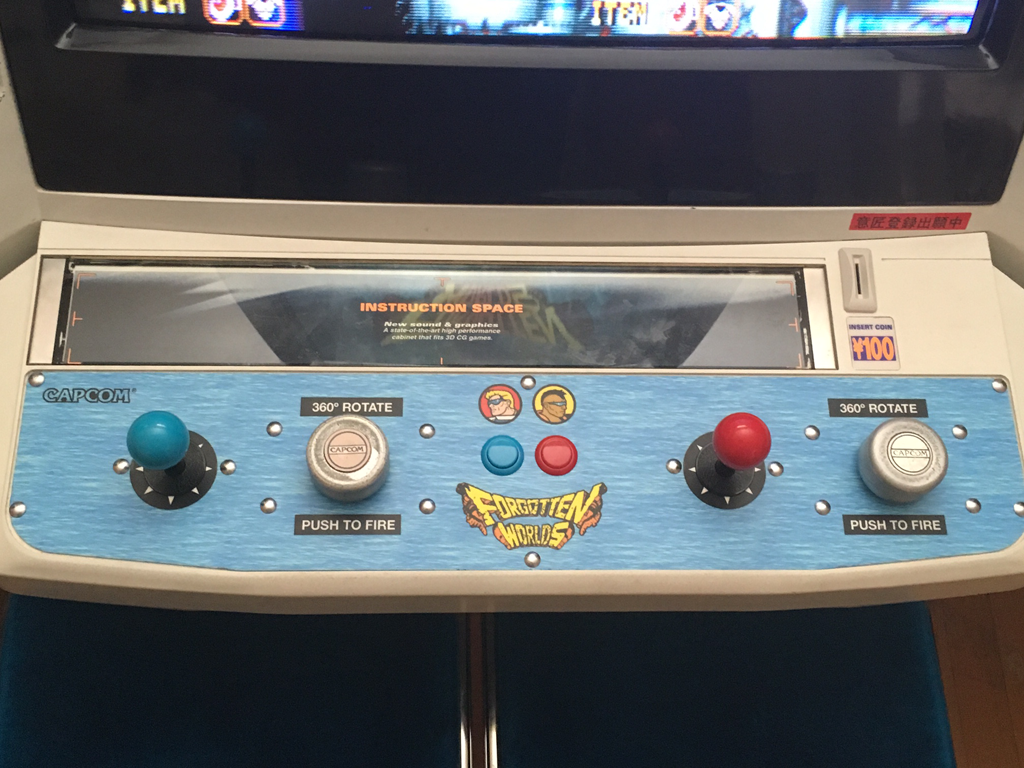
Another copy of this wonderful Capcom shooter has been preserved!

